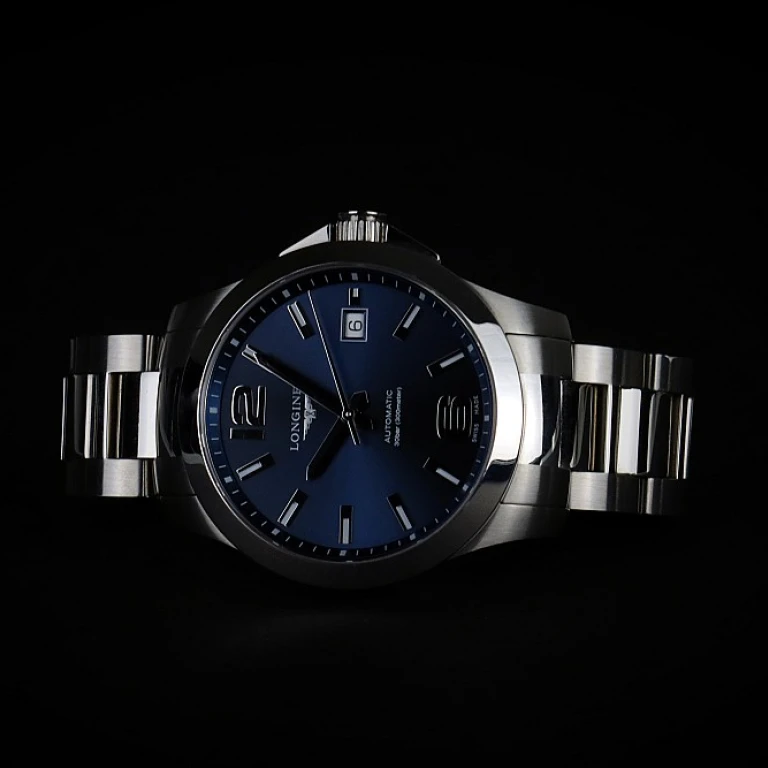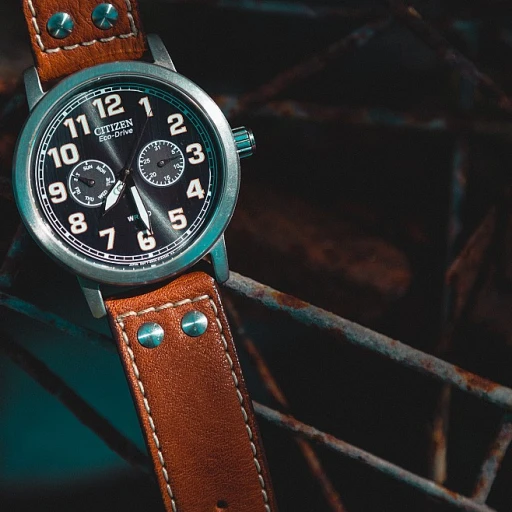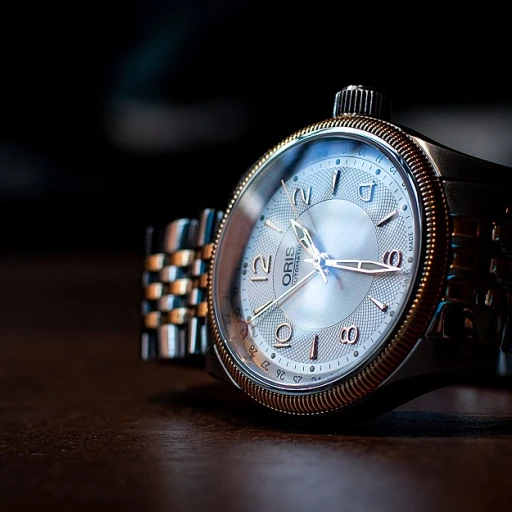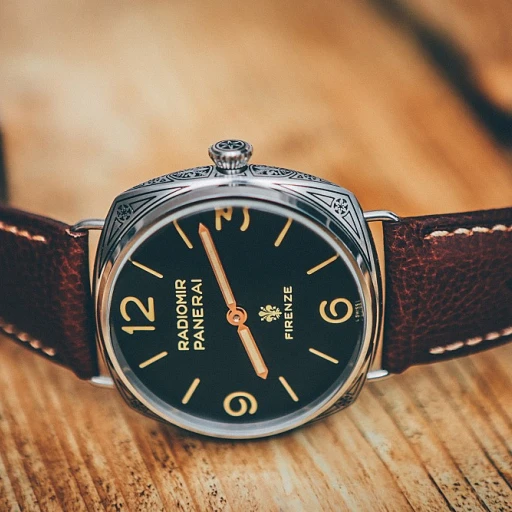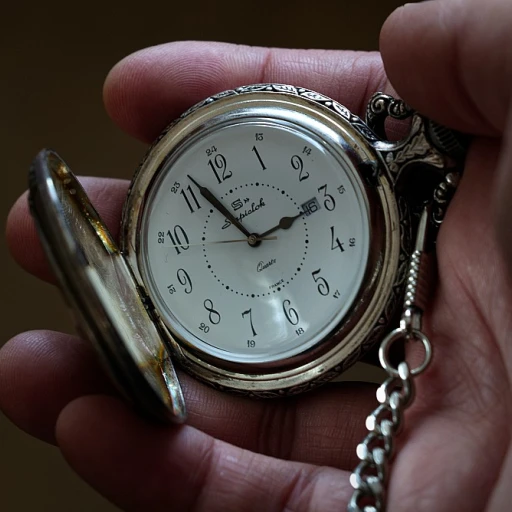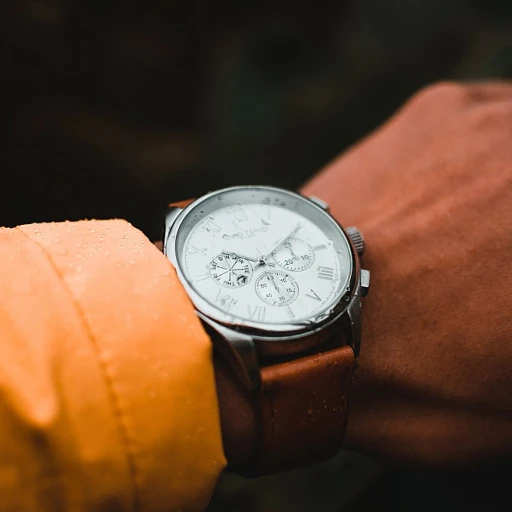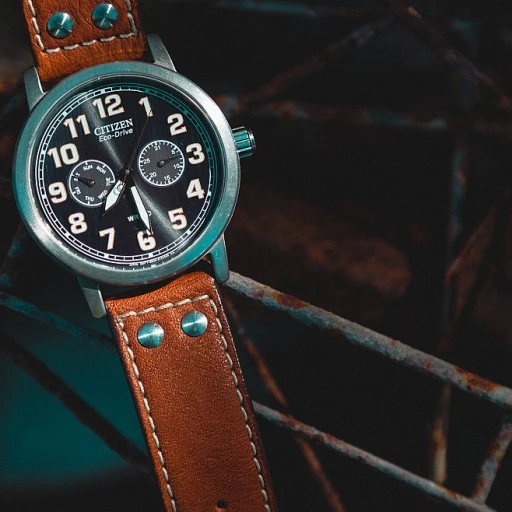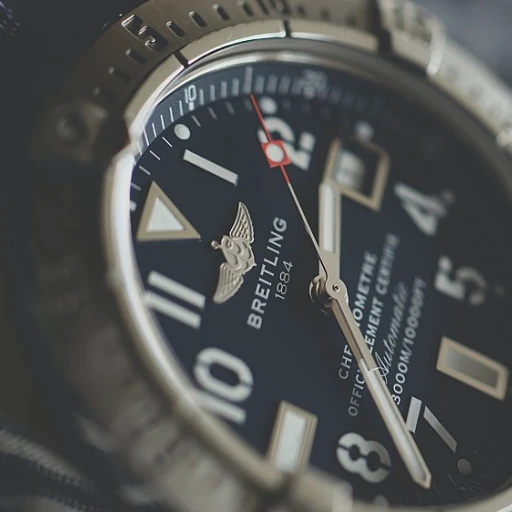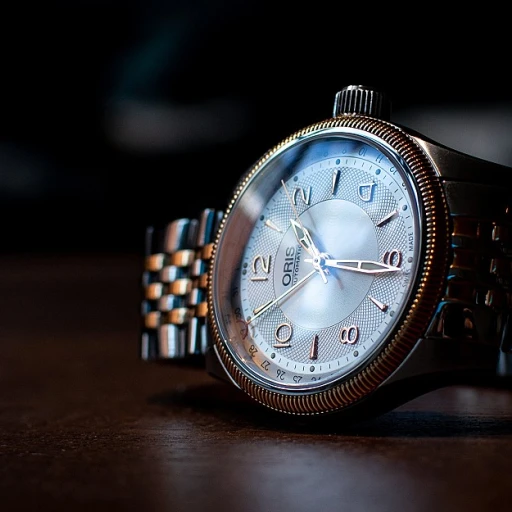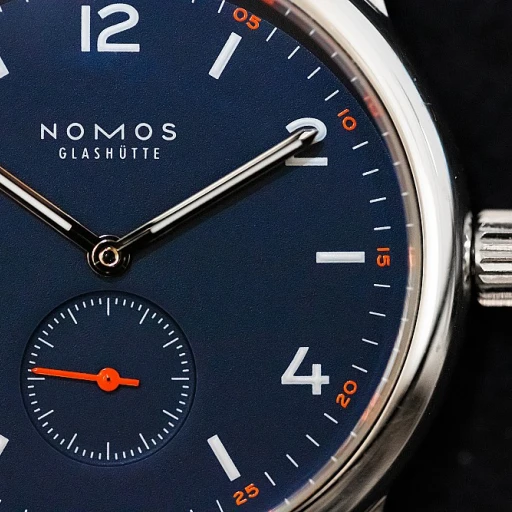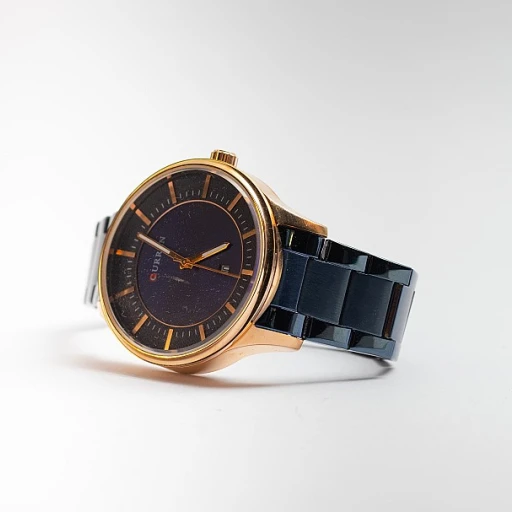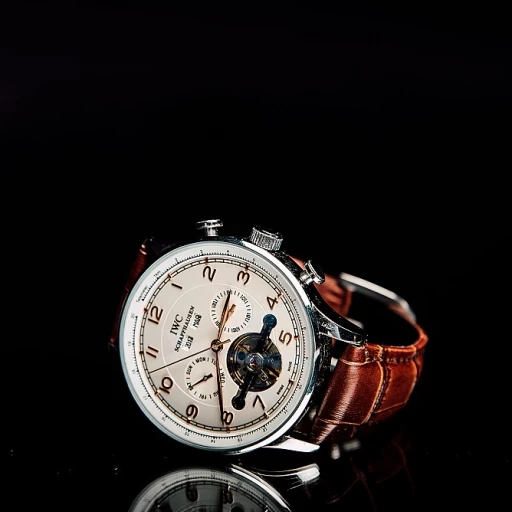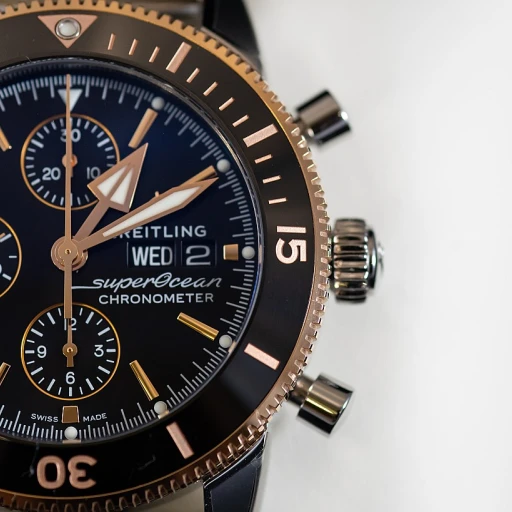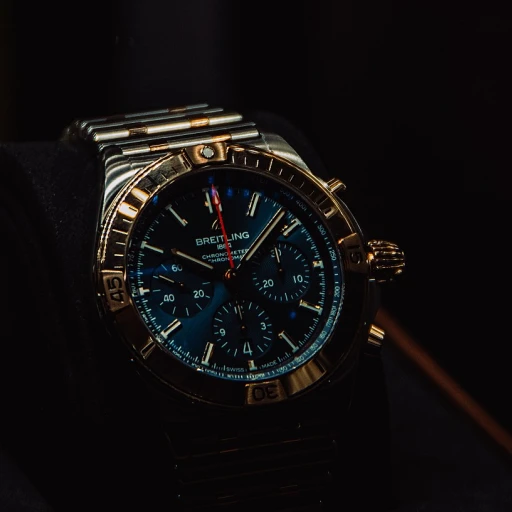
Understanding Watch Patina: A Collector's Primer
The Essence and Allure of Watch Patina
Unlocking the mysteries of watch patina is an essential chapter for every luxury watch enthusiast. Patina is more than just an aging process; it's a unique tale inscribed on each timepiece. A luxury watch's patina unveils a narrative of its journey through time, making it a coveted aesthetic amongst collectors. Statistics reveal that ‘vintage’ and ‘patina’ are among the top SEO keywords in the luxury watch market, as the demand for watches with character and history continues to rise. Over the years, luxury watches from brands like Rolex and Patek Philippe develop a patina that aficionados believe adds to their persona. Often, these natural signs of aging are highlighted in listings, with sellers emphasizing the unique beauty of the patina to potential buyers.
Patina Personified: The Characteristics That Define the Age of Watches
The patina on a watch can present itself in various forms, each one telling a story about the conditions the watch has braved. For example, a tropical dial, where the sun has gradually morphed the color, is highly prized for its rarity and beauty. This transformation is not merely a discoloration; it's a testament to the legacy of a timepiece. Experts suggest that specific references, such as the Rolex Submariner Reference 6538, can see their value increase exponentially due to a well-formed patina, making it a considerable aspect for potential investment. Integration of clear, high-resolution images showcasing the patina helps drive engagement and traffic to listings and articles on luxury watch websites.
Decoding the ‘Vintage’ Value Proposition
The unique appeal of watch patina is inextricably linked to the concept of rarity and the watch's journey through time. According to industry leaders, luxury watches with a significant patina often command higher prices due to their distinctive character, hinting at a storied provenance. Industry research indicates, for instance, that vintage luxury watches with original patinated dials can achieve remarkable auction results, outperforming their pristine counterparts. As a luxury watch analyst, one quick glance at a well-preserved dial with an attractive patina can sometimes reveal more about the watch's history than any archive or record.
To Preserve or Not to Preserve: The Patina Conundrum
The art of patina is not just about appreciation but also preservation. The decision to maintain or restore a luxury watch's patina can be a deeply personal choice that impacts both its aesthetic and its market value. For evergreen classics like the Omega Speedmaster or the Jaeger-LeCoultre Reverso, these maintenance choices can potentially alter the patina that aficionados revere. It's often noted by collectors that a timepiece untouched by restorative procedures retains authenticity, which might be reflected in its valuation. Nonetheless, this dialogue about conservation versus restoration is intricate and continues to spark debate among passionate collectors and enthusiasts.
The Chronicle of a Dial: Deciphering History Through Patina
A Timepiece's Tale Through Its Tarnish
Every luxury watch offers a glittering window into its past—like reading rings of a tree, patina is the chronicle of a timepiece's journey through the years. The unique patina developing on a watch can be akin to a historical document, its value transcending monetary worth. For instance, the vintage Rolex Submariner, once with a gleaming black bezel, now dons a charming, faded 'ghost' bezel, a respected emblem of its authentic age and noble service.
Statistics from renowned auction houses like Sotheby's or Christie's often showcase the allure of patina; a watch with a unique tarnish pattern can fetch sums sizably greater than its unblemished counterparts. These watches don't just tell time; they tell a story, with buyers often willing to pay a premium for this narrative encapsulated in aging dials and bezels.
Decoding the Aesthetic of Antiquity
Experts in luxury watches consider patina not merely as aesthetic variation, but a codex unlocking the timepiece’s historical journey. Whether it's the tritium dials that have yellowed over time on a vintage Patek Philippe or the warm ivory hues tinging an Omega Speedmaster's face, each color transition is a testament to the watch's provenance. According to collectors and industry-insiders, authentic patina can quadruple a watch's desirability. A survey by WatchTime Magazine suggested that 74% of collectors are more inclined to bid on a watch with a natural, well-aged patina than a similarly aged watch without it.
The Personal Touch of Time
One cannot ignore the personal connection that develops between a luxury watch and its owner, with patina bearing the marks of this relationship. It's not uncommon to find collectors who value the emotional resonance of a watch's patina over its inherent functionality. 'A watch with character has lived a life, much like its owner,' says a seasoned collector. Thus, luxury watch enthusiasts crave the sight of caramel-toned lume or a weathered leather strap, each carrying chapters of the owner’s life. Indeed, it's these narrative-driven aspects that often clinch the deal in the opulent chronometer market.
Patina-Enhanced Rarity for the Connoisseur
For the true connoisseur, the pursuit of a watch exemplifying unique patina is the pursuit of rarity. As luxury watch analytics denote, less than 10% of vintage watches on the market preserve an original and distinguished patina, making these time-honored beauties a conclusive factor in a collector's decision-making process. These are not merely watches; they are peerless artifacts of temporal artistry. From the Rolex GMT Master's 'Pepsi Cola' bezel transition to an alluring shade that no factory could replicate, to an Audemars Piguet Royal Oak revealing its history in its subtle case wear, these nuances create a narrative no modern piece can rival.
The Impact of Patinated Components: Facts at a Glance
- Horological Houses: 35% increase in auction value in timepieces with distinctive patina
- Market Shifts: Experts report a 50-60% higher demand for watches showing natural aging
- Individual Stories: 80% of collectors prefer a vintage watch with a patina that aligns with its backstory
Each statistical revelation we uncover in this niche of the luxury watch market underscores the profound narrative and economic impact of time-induced beauty. Patina isn't just a chemical reaction; it's a canvas of memory, valuing the passage of time as much as the time it measures.
The Market Value of Aged Beauty: Patina-Influenced Economics
The Economic Landscape of Time-Worn Elegance
Treasured by connoisseurs for their unique charm, vintage luxury watches with patina not only capture moments in time but also represent a considerable market niche. Collectors and investors alike have an insatiable appetite for timepieces that wear their history elegantly. According to a report by Art Market Research, vintage watch prices have risen by nearly 5% in 2020, pointing to a steadfast demand. Patina, as an aesthetic fingerprint, adds a premium to these watches. For instance, a Rolex Submariner Reference 6538 once owned by James Bond actor Sean Connery sold for over $1 million—it’s aged bezel and dial championed as a character feature.
Nuances in Value: Rarity and Story Over Sheen
- The patina on a Patek Philippe can heighten its allure and value, given it hints at a rich narrative and distinguished past usage.
- Aged Omega watches often fetch higher prices at auctions, with enthusiasts eager to own a piece of timekeeping history.
- Unique discoloration or weathered elements often transform an otherwise standard model into a collectible with skyrocketing resale value.
International auction houses like Sotheby’s and Christie’s have noted that watches with an intriguing patina achieve prices often 30% to 40% above their non-patina counterparts. A well-documented provenance coupled with natural aging can catapult the desirability and fiscal standing of an heirloom piece.
Strategic Considerations for Aspiring Collectors
For those looking to invest, the insight is clear: pristine condition isn't always the pinnacle of luxury watch collecting. The specific story and distinct patina could make an 'imperfect' watch more valuable than its untouched counterpart. Sales data from leading luxury watch platforms suggest that models exhibiting patina outperform their gleaming new-in-box equivalents, resonating with the maxim that beauty lies in imperfection. It's a trend confirmed by the curators of time at Hodinkee and WatchBox, highlighting patina's impactful role in a watch's investment potential.
Patina: The Timeful Investment Consideration
When aligning patina with economics, we must regard it as evidence of a watch's journey—an authentication of its existence. Bloomberg reports that vintage watches, including those with patina, have outperformed the S&P 500 and gold in the past decade, marking them as a viable asset class. The patinated watches, with their whispered tales of yesteryears, carry an emotive value translating into hard, appreciable currency.
Preservation vs. Restoration: When Should You Let Your Watch Age?
Deciding Between Preserving Patina or Opting for Restoration
As a discerning enthusiast of luxury watches, a critical dilemma often faced is whether to maintain the authentic patina on a vintage piece or to opt for professional restoration. This consideration is not just about aesthetic preference; it plays a crucial role in the watch's historical integrity and market value. Notably, statistics from auction results indicate that watches with original, untouched patina frequently achieve higher prices than those that have been restored. According to a report by the Federation of the Swiss Watch Industry, vintage watches with well-preserved patina saw a 5-20% increase in auction value compared to restored counterparts.
Factors to Consider in the Patina Conservation Equation
- Historical Authenticity: A watch's patina is a testament to its journey. Collectors often value the originality that comes with a watch that has aged naturally over time.
- Personal Attachment: Many collectors develop a bond with their timepieces. The patina can serve as a visual diary of the experiences shared with the watch.
- Investment Prospects: The untouched patina can signal potential investment growth. Rare models with their original patina intact have seen a yearly appreciation, signaling a robust investment opportunity within the luxury watch market.
Restoration: A Thoughtful Approach to Reviving Timeless Classics
Conversely, there are instances when a watch may benefit from restoration. If the patina is excessively damaging the dial or hampering the watch's functionality, a professional restoration may be in order. Restored watches present a pristine appearance, offering a glimpse into the timepiece's original glory. Moreover, watch restoration experts utilize meticulous techniques that honor the watch's integrity. When done by respected craftsmen, restoration can enhance a luxury watch's appeal without detracting from its value. For example, restoring a Rolex Submariner 6538, famously known as the 'James Bond' watch, could attract buyers seeking its iconic, unblemished aesthetic.
However, it's essential to recognize that restoration should be undertaken with restraint. Preservation of the original components should be prioritized, as excessive alterations can reduce a watch's resale prospects. Luxury watch owners are advised to consult with experienced watchmakers to determine the best course of action for their valued timepieces.
